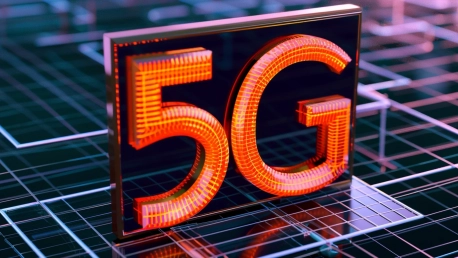The telecom industry currently faces a challenging period marked by underperformance in 5G deployment and the resulting organizational changes within major companies. One of the most compelling aspects of this scenario is the failure of 5G technology to deliver the expected return on investment (ROI), culminating in significant layoffs and reorganization within the sector. Specifically, Samsung Electronics has been a notable example, as the company reshuffled around 700 of its 4,000-employee network division to other departments. This ongoing “5G winter,” a term used to describe reduced telecom activity and investment, represents a broader industry trend indicating that all is not well in the realm of next-generation wireless technology.The primary cause cited for this slowdown in 5G deployment is cyclical market conditions coupled with financial reconsiderations by telecom operators. Key industry players like AT&T and Verizon exemplify this trend, having drastically slashed their capital expenditures. For instance, AT&T’s capital expenditures plummeted from $4.3 billion in the first quarter of the prior year to $3.8 billion in the same period in 2024. Similarly, Verizon reduced its yearly expenditure from $23 billion in 2022 to a range between $17 billion and $17.5 billion. Consequently, this decline in spending has been unexpectedly rapid and severe, leaving many industry watchers taken aback. Typically, the U.S. telecom sector witnesses a high surge in spending during the rollout of a new wireless generation, which is then followed by a cooling-off period. Unfortunately, despite significant investments in spectrum and initial rollouts, the anticipated financial returns from 5G have not materialized as expected.
Industry-Wide Impact and Layoffs
The adverse effects of the 5G slowdown are not confined to Samsung alone. Major companies like Nokia and Ericsson have also felt the repercussions, with substantial workforce reductions as a direct response to the challenging market conditions. Nokia, for instance, has planned to eliminate up to 14,000 jobs, while Ericsson has announced its intention to trim 8,500 positions. These layoffs are set against the grim backdrop of an estimated 100,000 job losses within the tech sector in the current year according to data from Layoffs.fyi. This unsettling trend underscores the severe impact of the 5G underperformance on the wider industry and its workforce.Besides the immediate financial implications, the industry’s faith in 5G technology has also been questioned. Historically, there’s an odd-even cycle belief regarding wireless technology generations, suggesting that odd-numbered generations like 5G tend to be less successful compared to their even-numbered counterparts. While this may not be a scientifically rigorous observation, the belief has found some resonance within industry circles amid the current 5G struggle. This perception only adds to the already existing apprehensions and hesitations among both operators and investors about committing more capital toward 5G expansion.
The Standalone Core Dilemma
A critical factor exacerbating the slow progress of 5G is the lack of significant investment in its standalone (SA) core, vital for operators to effectively monetize the new technology. Most U.S. operators, with the notable exception of T-Mobile, have postponed investments in SA due to the absence of compelling services that could justify such financial outlays. This creates a classic chicken-and-egg situation: operators need to invest in the SA core to unlock 5G’s full potential and derive financial benefits, but they are reluctant to do so without immediate and clear monetizable opportunities.This hesitation further feeds into the broader, cyclical investment concerns within the industry. With operators and companies alike caught between the need to modernize and the fear of incurring further losses, the 5G venture has reached a standstill. What emerges is a complex landscape where cautious financial strategies dominate over aggressive investment, stymieing innovation and growth in the process. Consequently, the anticipated transformative impact of 5G on connectivity and digital services is yet to be fully realized, leaving both industry leaders and consumers wanting for the revolutionary changes that were so widely touted.
Future Outlook and Strategic Adjustments
The telecom industry is in a challenging phase, defined by underperformance in 5G deployment and substantial organizational changes within key companies. A central issue is the failure of 5G technology to meet anticipated return on investment (ROI), resulting in notable layoffs and restructuring. Samsung Electronics exemplifies this trend, having reassigned around 700 of its 4,000-employee network division. This “5G winter,” marked by reduced telecom activity and investment, signals broader industry difficulties with next-generation wireless technology.Market conditions and financial reevaluations by telecom operators are primarily blamed for the 5G slowdown. Major players like AT&T and Verizon have significantly cut their capital expenditures, reflecting this trend. AT&T, for instance, reduced its first-quarter capital expenditure from $4.3 billion last year to $3.8 billion in 2024. Similarly, Verizon slashed its annual expenditure from $23 billion in 2022 to between $17 billion and $17.5 billion. This swift and severe spending decline has surprised many industry observers. Normally, the U.S. telecom sector sees a sharp rise in spending during the launch of a new wireless generation, followed by a cooling-off period. However, despite heavy investments in spectrum and initial rollouts, the expected financial returns from 5G have not been realized as anticipated.









